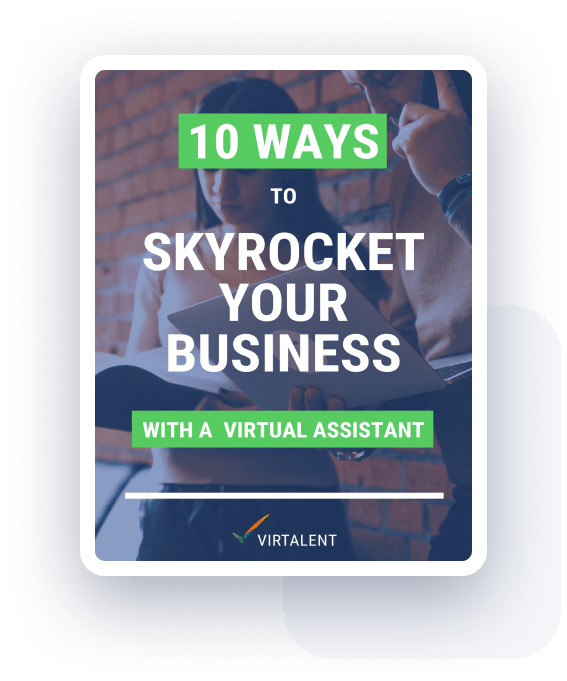Content marketing is a business strategy centred around creating high-quality content to attract customers.
While almost all businesses create content as part of marketing, content marketing is a more strategic approach that requires a more detailed planning stage to bring content to a carefully selected audience, and ideal customer.
Content is then created to build an ongoing presence and relationship with that audience, slowly nurturing them into a potential customer by gaining trust, sharing useful information and insights that address the audience’s needs, problems and interests.
This approach is highly effective, as evidenced by the fact that 49% of businesses in the UK report that organic search, a key element of content marketing, produces the best return on investment generating 53% of all website traffic.
This guide will take a look at the fundamentals of content marketing, including some practical tips and strategies that are geared towards UK small business.
What Is Included In Content Marketing?
Content marketing isn’t restricted to a single platform. It usually is part of a larger action plan that includes a mixture of blog content, social media posts, videos, infographics and even podcasts and ebooks.
While it may feel intimidating to try and take some of these on, particularly if a business owner has never attempted to write a book before, they can actually be easier to implement than it may appear!
Blogs
Blogs have long been the cornerstone of content marketing. It’s a great way for a business to showcase their knowledge and answer some of the most common questions that their audience may have. These are also useful guides that are often picked up by search engines such as Google which can direct potential customers with a relevant need to your site.
Videos
Video is a fantastic way of engaging with your audience, especially if you aren’t as confident when it comes to writing. Platforms such as Instagram, YouTube, TikTok, and now even LinkedIn, are a great way of promoting your business and expertise through the medium of video. The key here is to catch people’s attention with a striking title or thumbnail to get them watching.
Social Media
As above, social media is a great way to promote your business through different platforms and mediums. We’ve spoken in the past about which social media platforms are best for your business, but while there is no clear winner there are opportunities across almost all platforms. The key here is to give them all a try and see what works best for you.
Infographics
An infographic is a visual representation of useful information. These can be statistics, facts, or even dates for a diary, presented in a visually striking way. These are excellent for placing on, and enhancing, blogs and social media. One social media platform where these are often shared is Pinterest. Infographics can require a bit of effort to create using something like Canva or Piktochart, but are often very engaging and shared far and wide.
eBooks & Whitepapers
If you are an expert in a niche field then creating an eBook is a great way to share that knowledge in what we call long-form content. The length of these allows for a more in-depth dive into specific topics. An eBook is normally like a short brochure that gives details on ‘how-to’, or context to a particular topic. A whitepaper in comparison is normally a long article that presents statistics or expert data in a way that is similar to an academic paper.
Podcasts
Podcasts are a great way to get together with other people within your industry and discuss topics that are important to your audience. These are not only informative, but also used as a leisure activity. From the latest industry news, interviews and open discussions, these can provide valuable content that people can consume while on the go. You don’t need a lot of equipment to get started either, with many people simply using their iPhone to record.

You may read the list above and be bursting with ideas of what you want to create and share, however before a business starts to create content they must first work out who their audience is.
The key thing here is to do research – even if you know your customer and audience really well, it’s worth taking the time to complete some market research as it can uncover potential new opportunities for growth.
Here are some steps that you can take to identify and understand your ideal target audience.
Take a look at your current customer base – Whether they are current customers or lapsed, analyse who they are and why they buy from you. Look for patterns and common characteristics. This can provide some insight into who is likely to buy your products or services moving forward.
Surveys & interviews – Try and get direct feedback from your current customers, and also listen to potential customers as well, to find out what drives them. This can be done over a call, or by sending out a survey online. This will critically help you find out what are deemed their “pain points” – the problems that your company can solve.
Look at social media analytics – If you already have some social media accounts you should be able to get an idea of the people who are engaging with your content, or at least viewing it. This is often by geography, gender and age. Sometimes businesses will be so focused on selling to a particular demographic they will miss who is engaging with them already.
Monitor trends – Take a look in any trade press related to your industry, or see what your competitors are doing and what consumers engage with. This will not only give you ideas of what is and what isn't working well, but monitoring trends can also spark new ideas too.
Create personas – Take everything that you have learned and build a really specific customer profile. From age, gender, likes and dislikes, when you have a number of these clearly defined (and make sure you don’t do too many),you have now defined the type of person you need to create content for. By having a particular person in mind for content, it becomes a lot easier to know where to find them and how to speak to them through your content.
Test and Refine – Nobody will get this right the first time. Content marketing, like any marketing, is all about trying things and seeing what works and what doesn’t. Make sure you are constantly looking for ways to improve, but also giving it enough time to have a true representation of whether or not it’s working.
10 Steps To Get Started With Effective Content Marketing
If you are keen to get started, but not sure where to begin, here are our ten steps that we recommend you try. They can be done all by yourself, or alternatively you can bring in additional experts and support to help. Running a business can feel like a mammoth task some days, and having an extra pair of hands can make all the difference.
1. Start Small
Like a new habit, starting off small is the key to success. No business owner has the time, energy or patience to commit to writing 7 blog posts a week, plus social media, recording a podcast and a video series all from the start. Pick areas that you feel moderately comfortable with and start there, such as committing to writing one blog post a week. Once you get into a rhythm and flow it will be easier to bring other elements of content marketing into the mix.
2. Use Tools
We live in an age now where there are tools that will help with everything. From email newsletter sending platforms, to social media schedulers. While it might not be wise to pay for year long licences for every tool you can find, use the same start small concept to test out tech to help you out. Often you will find peers who have recommendations, and even discount codes that they can share with you to try things out.
3. Create A Content Calendar
Nobody knows your business better than you do, and every business has a very different flow and rhythm. Are you planning Christmas in June? Do things get super busy in March before the end of the tax year? Sit down and plan out your typical year and then create themes and content based around that. You don’t need to get too detailed, but having a feel for what your customers may be thinking makes it easier to drill down month to month. A great tip is to batch create content as well, so allocate a day in your calendar a month ahead to plan content out beforehand.
4. Reuse & Repurpose Content
All the best content creators reuse their content. As you build your content and audience, new people will come who will have not seen your content before. Things can change and be updated with new input and information. There is simply no point in expecting to create content from scratch every single time. Use the same content on different platforms, in different ways. Take a blog post and break it into small little chunks that can be put on Facebook or LinkedIn.
5. Find Out About SEO Basics
Search engine optimisation, or SEO, is a way of making sure your website and content is created so that it will get picked up by search engines likeGoogle. This can be through simple actions such as making sure that your blog posts are titled correctly, or that there are links in your text. For more information, have a look at our guide on common mistakes in SEO that business owners make.
6. Engage With Your Audience
When your audience is replying to your posts, reply back! Dedicate some time when posting to messaging back and forth with your audience. Not only will this bring more authority to your brand as you are able to answer questions, but your potential customers will feel appreciated and more inclined to get in touch. Also the more replies you get when you first post it, the more likely the social platform will push it to people who haven’t seen your brand before.
7. Monitor Performance
Using tools such as social media analytics, or Google Analytics helps keep an eye on the performance of your marketing activities. When you post on social media, do visits to your website increase or do you receive more contact forms. If not, it could be that a change is needed to the time you are posting or perhaps the content doesn’t feel as fresh as it could. Set some small regular goals and try to hit these as you increase your content marketing output.
8. But Don’t Get Obsessed With Figures
Equally important is to not become obsessed with them. It’s good to know what is happening but don’t be tempted to check your website traffic halfway through a family dinner. Sometimes there are other factors that can impact marketing from seasonality, the algorithm of a platform, search engine updates, or even something as simple as the weather.
9. Collaborate With Others
It’s also a good idea to try and collaborate with other businesses and individuals that can help you. A great way to do this is through knowledge sharing in blog posts or podcasts. Working with others who have a similar target audience, but are not direct competitors, can open opportunities for both sides. Think guest blogging on each other’s websites or doing joint social media giveaways.
Another way is to bring in outside help such as a virtual assistant with a background podcasting. They can bring marketing expertise and insight, allowing you more time to focus on the business or other channels you feel more comfortable with.
10. Keep Learning!
What works today might not work tomorrow. Make sure to stay open to experimenting with new tools, tactics and ideas. Be led by the data, and if a new opportunity opens up for an audience, then check it out and test it. If you find that your video content generates more business than social, then shift more focus towards it, but while maintaining presence on social media. It’s an ongoing process and changes as often as business does.
You Can Content Market Too!
Content marketing may feel overwhelming at first but by approaching it with a structured plan and an open mind, it can be a lot easier – and even fun!
The key here is to connect with your potential customers in a way that is authentic and true. Be true to your brand, be consistent with your effort and look at ways you can provide value. By following this approach you will be on the way to building a strong, memorable and valuable brand presence.
If you are interested in having more help to bring your content marketing activities to life, then please feel free to reach out to us today. We can match you with a Virtual Assistant that can bring experience and knowledge to your ongoing marketing efforts.







